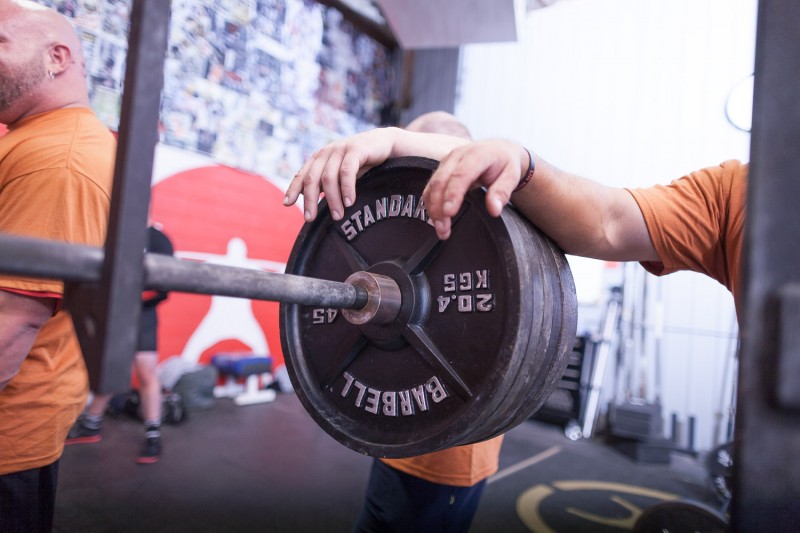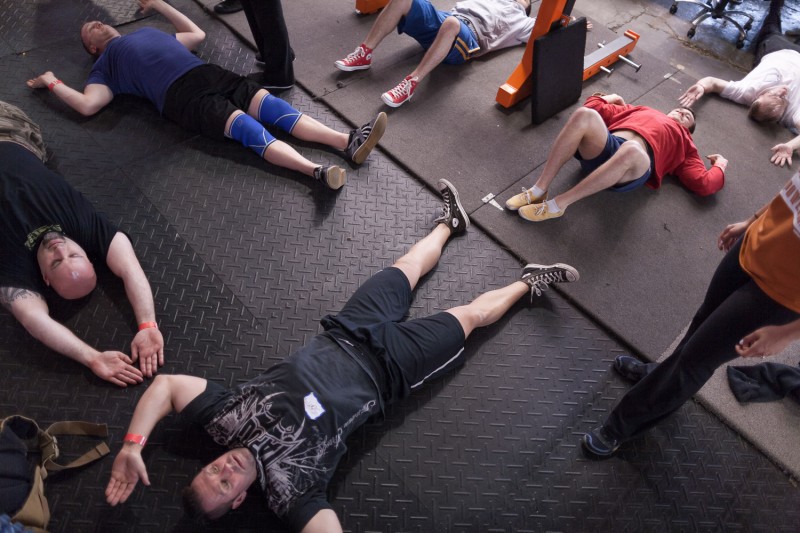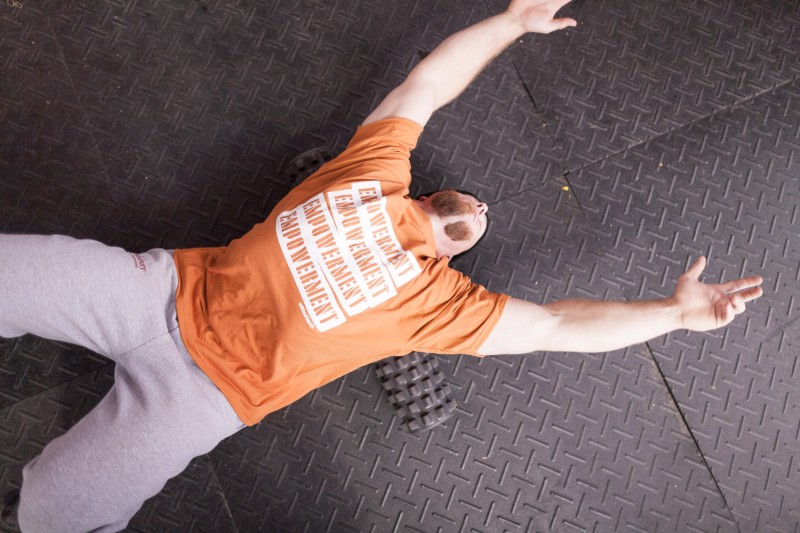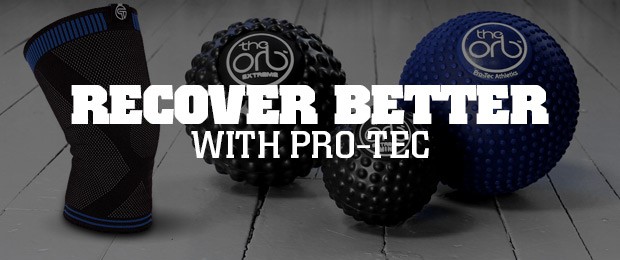Originally published June 10, 2005
No Yodas
The other day I was sitting in my office working on the 2006 marketing plan and in busts Jim with a huge grin on his face and a handful of reports. I was deep into my marketing plan and really did not want to break from what I was doing, but Jim insisted that he had to go over these reports with me. The next thing I noticed was that he had a certain glow to his face — not the normal reddish bloat I am used to seeing, but a look of 100% satisfaction. Jim then takes a seat and says he wants to discuss the Hostile Takeover.
RELATED: The Eight Keys, A Complete Guide to Maximal Strength Development
I knew it was coming. It was just a matter of time. But I was shocked that it was going to happen so soon. I leaned back in my chair and waited for Jim to tell me he had three or four geeks ready to become part of the crew. The biggest fear was about to become a reality. I told Jason and Jim that they could have total control over the articles and Q&A but that in no way whatsoever were they to ever to cross the line. I thought I made it clear: no Yodas (those who can only lift with their minds).
The Data
Jim then pulls out a handful of emails, Q&A comments, and web statistics. He proceeds to tell me the Hostile Takeover is working big time. Never in the history of elitefts have we had this much positive impact with the Q&A and articles section. The web hits were out of control and the comments were some of the best I have ever read in the history of the business. I had to admit that Jason and Jim were doing a great job. It had only been a few weeks but I could not deny the data staring me in the face. As I leaned over my desk reading the comments, I felt a certain sense of satisfaction from the work they were doing.
Programs
Jim then leaned back in his chair and took a deep breath. Over the past few years, I have become very good at reading non-verbal communication, and I knew something was about to hit me like a ton of bricks. During the pause in communication, I began to think about what he was going to hit me with. His review is coming up, so maybe it would be a raise. Or it could be another lost equipment estimate. With the look on his face, I knew he was stressed and did not want to say what was on his mind. I also know Jim and know he will ALWAYS say what he feels. Just a matter of seconds and I would know.
Then it hit me like a shot from a cannon in the chest. "We need to write programs and we need to do it now," Jim said.
It took me about .00001 seconds to answer no. He knows exactly where I stand on this one: programs are the kiss of death. There is no way you can write a program that will work for everyone. There are too many factors involved in getting it right. Hell, we can’t even write a program that will work for ourselves, and we know ourselves better than anyone. The fact is, you have to teach others how to train themselves. You have to show them basic templates and then teach them how to manipulate the variables from week to week and day to day depending on how they feel and the progress they are making. There is just no way around it. You can write a program but it will not work for over 80% of the people who use it. They have to have alternative options to keep progressing. This is why we have the Q&A in the first place. We are there to help with these options when the readers need help.
You Are Wrong
Jim then leaned forward and said, “You are wrong.” Jim then went on to explain that people learn best from programs and that programs offer real-world benefits that articles can’t offer. He went on to say that while the articles are great—and The Periodization Bible Part One, Part Two, and The Eight Keys series are perhaps the best prescription articles we have even done—they still miss the market for several reasons. These reasons are:
- Most people never read the articles.
- If they do read them, they can’t understand them.
- If they do understand, they still have no idea what they are doing.
- People want to be told what to do.
- 90% of lifters do not know how to determine their weak points.
- If they do know their weak points, they do not know how to fix them.
- Most readers are already following the sample program from The Eight Keys.
I had to stop him as he kept ripping off reasons. I understood what he was saying but saw this more as our failure to teach them. To me it was simple: we need to keep trying different methods until we teach them how to write their own programs.
Jim then agreed and went into a bunch of scientific jargon on the learning process. He told me that some people can learn by reading and seeing while others can only learn by doing. There was a bunch of other stuff he bored me with as he read from some physiology of learning book. I then knew that he went out of his way to prepare for this meeting and at this moment knew more than I did about this topic. It still did not make me feel better about what he saying.
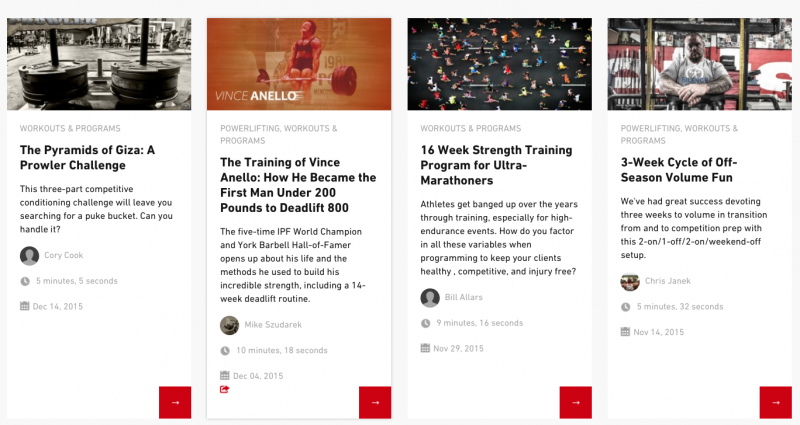
The Solution
Jim has learned over the years of working at elitefts that if he is to bring a problem or idea to me then had had better have a solution to the problem, or he'd better not bring it to me in the first place. Jim had a few solutions to this and, I have to say, he sold me on one of them. His solution was for us to keep all programs in three weeks phases. This was cool with me because this is what we all should be doing in the first place. The second aspect was to design three-week phases for very specific purposes for specific individuals. This way we could increase the likelihood of the program not only having a positive effect but it would also show the different methods, loading patterns, and movements used to address the weaknesses of the athlete. With his great sales skills and preparation, I agreed we would give it a shot and see what people think.
Jim then hit me with his great negotiation skills and said, "Dave, I am so happy you agree. Jason and I decided you should write the first one."
As he walked out of the office I was still trying to figure out how I just agreed to this, let alone writing the first program. I have myself to thank for this. It seems all his sales training is paying off.
B.T.H. Program
I gave my word to Jim, so here is the first program. I call this the Beat to Hell (B.T.H) program. This is a three-week phase I have had to use more times then I like to remember. This is designed for lifters and athletes who are just beat the hell up. By this I mean they are over-trained, tight, injured, and have little mobility. Examples of this include poor hip mobility, tightness in lower back, upper back and traps, limited range of motion in just about very joint, and poor GPP. From my experience, these are the lifters and athletes that have been lifting for many years (usually over 10 years of hard training). They are usually over 35 years of age, require a lot of warm-up sets, and would never think about squatting without a suit or briefs. The more years of hard training we get under our belts, the more important phases like this become.
There are several components of this program. These include light cardio, stretching, mobility, and various types of strength. To keep the length of this article down, I will just highlight very simple reasons why there are included in the program:
Stretching — While it may or may not help, it sure doesn't hurt to add it into the program at this time. There are many methods of stretching. The two methods used in this program will include dynamic and static stretching.
Mobility — As we get beat up, we lose basic mobility. Can you free squat without the bar to below parallel? Can you do it without pain? Can you get off the floor without pain? Can you move all your joints in all ranges of motion in comfort? If not then you see my point. There are movements you can do to help with this.
Cardio — Yes, there are benefits of cardio work. To make this very simple, let's just say that light cardio work will get the heart pumping and blood flowing. This will help your body to utilize nutrients for better recovery. This is very important if you are beat up and have poor recovery.
Strength — I am not going to cover all the different types of strength and reasons why. This has been covered many times already in previous articles (The Eight Keys series). I know you really want to get to the meat of the program, so let’s get with it.
The B.T.H. Program
Week 1
Monday
- Mobility Sector – 10 reps per movement (see mobility sector)
- High Rep Pin Pulls (Two Inches Above Knee) — 3 sets of 20 reps
- Band Leg Curls – 3 sets of 10-15 reps
- Reverse Hypers – 3 sets of 15 reps
- Hanging Leg Raises – 2 sets to failure
- Crunches – 3 sets of 20 reps
- Side Bends – 3 sets of 20 reps
- Stretching Sector – See stretching sector
Tuesday
- Light Cardio – 20 minutes walking or any other light cardio
- Stretching Sector – See stretching sector
Wednesday
- Mobility Sector – 10 reps per movement (see mobility sector)
- Dumbbell Presses – 3 sets of 20 reps
- Pushdowns – 4 sets of 20 reps
- Chest Supported Rows – 3 sets of 10 reps
- Dumbbell Bent-Over Lateral Raises – 3 sets of 12 reps
- External Shoulder Rotation – 3 sets of 20 reps
- Stretching Sector – See stretching sector
Thursday
- Light Cardio – 20 minutes walking or any other light cardio
- Stretching Sector – See stretching sector
Friday
- Mobility Sector – 10 reps per movement (see mobility sector)
- Box Squats (SS Yoke Bar or Manta Ray) — 50% for 10 sets of 2 reps with 45 seconds rest
- Glute Ham Raises – 3 sets of 12 reps
- Reverse Hypers – 3 sets of 8 reps
- Rainbows – 3 sets to failure
- Pulldown Abs – 3 sets of 15 reps
- Medicine Ball Torso Twists – 3 sets of 20 reps
- Stretching Sector – See stretching sector
Saturday
- Mobility Sector – 10 reps per movement (see mobility sector)
- One-Board Bench Press – 40% to 50% for 10 sets of 3 reps with 45 seconds rest
- Blast Strap Push-Ups – 3 sets to failure
- Band Triceps Extensions – 3 sets to failure
- Dumbbell Rows – 3 sets of 12 reps
- Dumbbell Side Raises – 3 sets of 10 reps
- External Shoulder Rotation – 3 sets of 20 reps
- Stretching Sector – See stretching sector
Sunday
- Light Cardio – 20 minutes walking or any other light cardio
Week 2
Monday
- Mobility Sector – 20 reps per movement (see mobility sector)
- High Rep Pin Pulls (One Inch Above Knee) — 3 sets of 20 reps
- Band Leg Curls – 4 sets of 10-15 reps
- Reverse Hypers – 4 sets of 15 reps
- Hanging Leg Raises – 3 sets to failure
- Crunches – 4 sets of 20 reps
- Side Bends – 4 sets of 20 reps
- Stretching Sector – See stretching sector
Tuesday
- Light Cardio – 20 minutes walking or any other light cardio
- Stretching Sector – (see stretching sector)
Wednesday
- Mobility Sector – 20 reps per movement (see mobility sector)
- Incline Dumbbell Presses – 3 sets of 20 reps
- Pushdowns – 5 sets of 20 reps
- Chest Supported Rows – 4 sets of 10 reps
- Dumbbell Bent-Over Lateral Raises – 4 sets of 12 reps
- External Shoulder Rotation – 4 sets of 20 reps
- Stretching Sector – See stretching sector
Thursday
- Light Cardio – 20 minutes walking or any other light cardio
- Stretching Sector – See stretching sector
Friday
- Mobility Sector – 20 reps per movement (see mobility sector)
- Box Squats (SS Yoke Bar or Manta Ray) — 50% for 12 sets of 2 reps with 45 seconds rest
- Glute Ham Raises – 4 sets of 12 reps
- Reverse Hypers – 4 sets of 8 reps
- Rainbows – 4 sets to failure
- Pulldown Abs – 4 sets of 15 reps
- Medicine Ball Torso Twists – 4 sets of 15 reps
- Stretching Sector – See stretching sector
Saturday
- Mobility Sector – 20 reps per movement (see mobility sector)
- One-Board Bench Press – 40% to 50% for 12 sets of 3 reps with 45 seconds rest
- Blast Strap Push-Ups – 4 sets to failure
- Band Triceps Extensions – 4 sets to failure
- Dumbbell Rows – 4 sets of 12 reps
- Dumbbell Side Raises – 4 sets of 10 reps
- External Shoulder Rotation – 4 sets of 20 reps
- Stretching Sector – See stretching sector
Sunday
- Light Cardio – 20 minutes walking or any other light cardio
Week 3
Monday
- Mobility Sector – 30 reps per movement (see mobility sector)
- High Rep Pin Pulls (Knee Level) — 3 sets of 20 reps
- Band Leg Curls – 5 sets of 10-15 reps
- Reverse Hypers – 5 sets of 12 reps
- Hanging Leg Raises – 4 sets to failure
- Crunches – 5 sets of 20 reps
- Side Bends – 5 sets of 20 reps
- Stretching Sector – See stretching sector
Tuesday
- Light Cardio – 20 minutes walking or any other light cardio
- Stretching Sector – See stretching sector
Wednesday
- Mobility Sector – 30 reps per movement (see mobility sector)
- Decline Dumbbell Presses – 3 sets of 20 reps
- Pushdowns – 5 sets of 20 reps
- Chest Supported Rows – 5 sets of 10 reps
- Dumbbell Bent-Over Lateral Raises – 5 sets of 10 reps
- External Shoulder Rotation – 5 sets of 15 reps
- Stretching Sector – See stretching sector
Thursday
- Light Cardio – 20 minutes walking or any other light cardio
- Stretching Sector – See stretching sector
Friday
- Mobility Sector – 30 reps per movement (see mobility sector)
- Box Squats (SS Yoke Bar or Manta Ray) — 50% for 15 sets of 2 reps with 45 seconds rest
- Glute Ham Raises – 5 sets of 10 reps
- Reverse Hypers – 5 sets of 8 reps
- Rainbows – 5 sets to failure
- Pulldown Abs – 5 sets of 12 reps
- Medicine Ball Torso Twists – 5 sets of 15 reps
- Stretching Sector – See stretching sector
Saturday
- Mobility Sector – 30 reps per movement (see mobility sector)
- One-Board Bench Press – 40% to 50% for 15 sets of 3 reps with 45 seconds rest
- Blast Strap Push-Ups – 5 sets to failure
- Band Triceps Extensions – 5 sets to failure
- Dumbbell Rows – 5 sets of 10 reps
- Dumbbell Side Raises – 5 sets of 10 reps
- External Shoulder Rotation – 5 sets of 15 reps
- Stretching Sector – See stretching sector
Sunday
- Light Cardio – 20 minutes walking or any other light cardio
Mobility and Pre-Habilitation Sector
Perform movements below in a circuit with 10 to 15 seconds between movements.
- Stability Ball Side-to-Side – Sit on stability ball and roll your hips from side to side.
- Stability Ball Figure Eights – Sit on stability ball and roll your hips in a figure eight pattern.
- Stability Ball Lunges – Sit on stability ball in a wide squat stance with you toes pointing out to the side. Roll on the ball down to one side and then the other like you would a side lunge.
- Stability Ball Squats – Sit on the ball in a wide squat stance with your feet out on front of you. Let your hips roll and drop forward. You should feel a stretch in your hips and groin.
- Hip Bench Crossovers – Stand in front of a flat bench. Use the bench as your marker to cross step over. Cross step over the bench from side to side.
- Hip Bench Step-Overs – Stand off to the side of a flat bench and use the bench as your market to step over. Step over the bench from front to back.
- Front High Kicks – Hold your left arm out in front of you and try to high kick your hand with your right foot. Repeat with the other side.
- Butt Kicks – Try to kick your butt with the heel of you foot.
- Arm Circles – Roll your arm in large circles with them held out to your sides.
- TKEs – To do a TKE you need a light or average band. Other bands may work as well. Choke it around a power rack post or any other stable object at knee height. Wrap the other end of the band around your knee. Walk back so the band is pulling at the back of your knee. With your heel on the floor, bend and flex your knee.
- Band Good Mornings – To do this you will also need a light or average band. Place band around your head so it is resting across your traps and upper back (not your neck!). Stand on the other end of the band. Now do good mornings.
- Forward Lunge – Just as you would think, step and lunge forward. If you are really tight I highly suggest you use a step or box to lunge onto.
- Side Lunge – Same as forward lunge but lunge out to the side.
- Wide Stance Squats – Free squats in a wide stance. Nothing special, just squat as deep as you can.
- Pillar Front Bridge – Get into a push-up position with the weight on your forearms and toes. Hold the position for 30 seconds the first week and add 10 seconds each week.
- Pillar Side Bridge – Same as pillar front bridge, except you will lay on your side with the weight on one forearm. Hold the position for 30 seconds the first week and add 10 seconds each week. Repeat for each side.
Stretching Sector (Basic List)
- IT Band Stretch with Band – Place average band around the bottom of your foot and around your neck. Lie down and, while keeping the banded leg straight, cross your leg over your body. Try to keep both of your shoulders on the ground.
- Band Hamstring – Place an average band around the bottom of your foot and around your neck. Lie down and, while keeping the banded leg straight, attempt to bring your knee to your chest.
- Foam Roller Lower Back – Lay on a hard foam roller or piece of PVC pipe. Roll up and down your lower back.
- Foam Roller IT Band – Same as above but use the roller on the side of your leg.
- Shoulder Band Traction – Strap one end of the band around your rack (or another stable object) and the other side around your wrist. Step away so the band pulls your arm into traction. Hold for 30 to 60 seconds while moving the joint. You should do this from a variety of positions (top, bottom, and straight out).
- Hip Band Traction – Same as shoulder band traction but you will place the opposite end of the band around your heel and lay on the floor. Slide away from the rack so your hip is pulled into traction.
These above are major movements of the stretching program. I do suggest you do one other stretch for each body part. Just do what you know. I do not want to list every stretch known to man.
The other day I was sitting in my office working on the 2006 marketing plan and in busts Jim with a huge grin on his face and a handful of reports.










